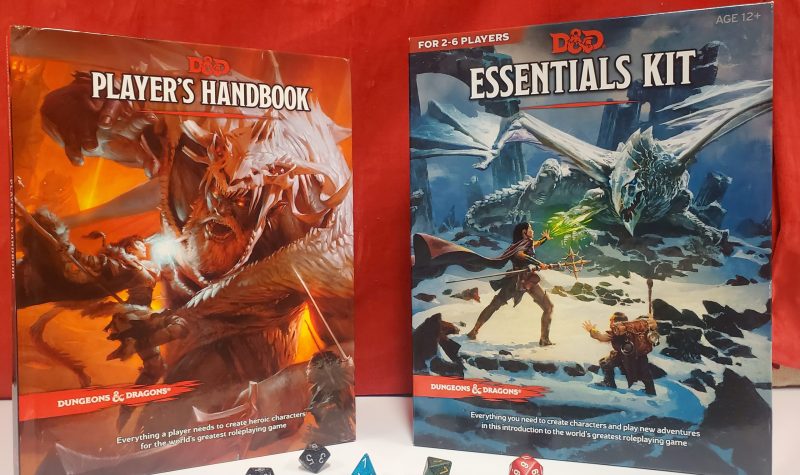As the new school year starts, so do the clubs and activities with Dungeons and Dragons (D&D) after school programs being an option that helps kids develop social and teamwork skills.
D&D is a collaborative storytelling fantasy tabletop roleplaying game that has been around for over 45 years. Players create characters to form a party and go out on homemade or pre-written adventures.
One program exists at the Roseneath Theatre where, for the last few years, they have run after school D&D games for kids aged eight to 16. They use the most recent ruleset of the game called fifth edition.
Even though the program hasn't started up yet, there are already days at Roseneath that are full and require sign-ups to be put on a waitlist.
Alice Keane, education and outreach coordinator at Roseneath, helps run the games as the one of the dungeon masters. The role of the dungeons master is to act as the narrator and guide for the players throughout the game. She has been part of the D&D program for 10 months. Keane says that the game helps teach kids abstract problem solving with a team of people who all have unique skills and abilities.
“You are telling a story together and one player will try and attempt to do something. The [roll of the] dice depends on how well or badly the roll defines the outcome. Just from that definition alone, it is teaching teamwork,” says Keane. “They have to work together to try and keep the story going. There are problems for them to overcome, and there is no set answer. It's up to them to do abstract thinking work on problem solving together. It is a great way to build confidence within themselves, they have to be the ones making the decisions.”
With the game depending on the roll of the dice and a character's proficiency in skills failure is built into the game. Keane says that the game provides a safe low-stakes environment for kids to help kids understand that “sometimes you can’t control what’s happening around you.”
While things can fail, players are not alone, as the game is played in groups of varying sizes. Keane says the game emphasizes teamwork as they have to work together to keep the story going. This is something that Shelly Mazzanoble, senior brand manager at Wizards of the Coast (WoC), the company that prints the books, agrees with.
“Kids can be competitive in so many different ways. They do not need that in Dungeons and Dragons. The first thing I say to kids when I'm teaching them is, ‘this is a collaborative storytelling game. We are working together,’ and you can just feel the collective sigh of oh, okay that sounds fun,” says Mazzanoble.
Mazzanoble is the lead of the D&D classroom curriculum and afterschool kit program at WoC. While leading the program, she also has firsthand experience with how the game helps kids learn skills. She runs a D & D club for grades four and five at her child’s school.
Mazzanoble runs the program with her husband once a week. In their first year of the program it was full. She says that they had over 50 kids in the school sign-up with most having had to be turned away.
From her experience she says that the game has helped kids break out of their shell.
“Very shy children in real life who will not lift their heads up, will not make eye contact, are drawn to the characters of rogues and bards, these are very outgoing characters,” says Mazzsanoble. “They're gonna have to be put in these situations where it's gonna be a little bit challenging…eventually, they do this enough times where they realize this isn't that different than in real life. And you can actually see this progress happen to them in their real lives, it's pretty amazing.”
Both Keane and Mazzsnoble have been blown away by the creativity of the kids at their tables. Keane says that she likes seeing them “take ownership” of the game in their own way. The kids at each of their games found creative ways to make the game their own.
At Keanes' table, her players were able to find a way to demystify the villain of their game. While Keane built the villain up as an eater of worlds her kids refused to call him anything other than Jeff. She says “they refused to be afraid” and “had fun doing it,” while taking a bit of the wind out of her sails.
While at Mazzanobles game the kids spent an hour of their hour and a half game working together and combining their skills to save two giant hamsters. She says that she only put them in the game for a four minute gag. The kids however took the distress of the hamsters seriously and banded together to safely get them out of danger using skills and tools that were unique to their characters.
“That's what I love about Dungeons and Dragons…we have a bunch of people saying different things and with different thoughts and ideas. We go from a to d to q to three to blue, and you get an entirely different story that one person simply could not have come up with. It is a team effort that makes storytelling fresh and innovative and really exciting,” says Keane.
Listen to the story below:


